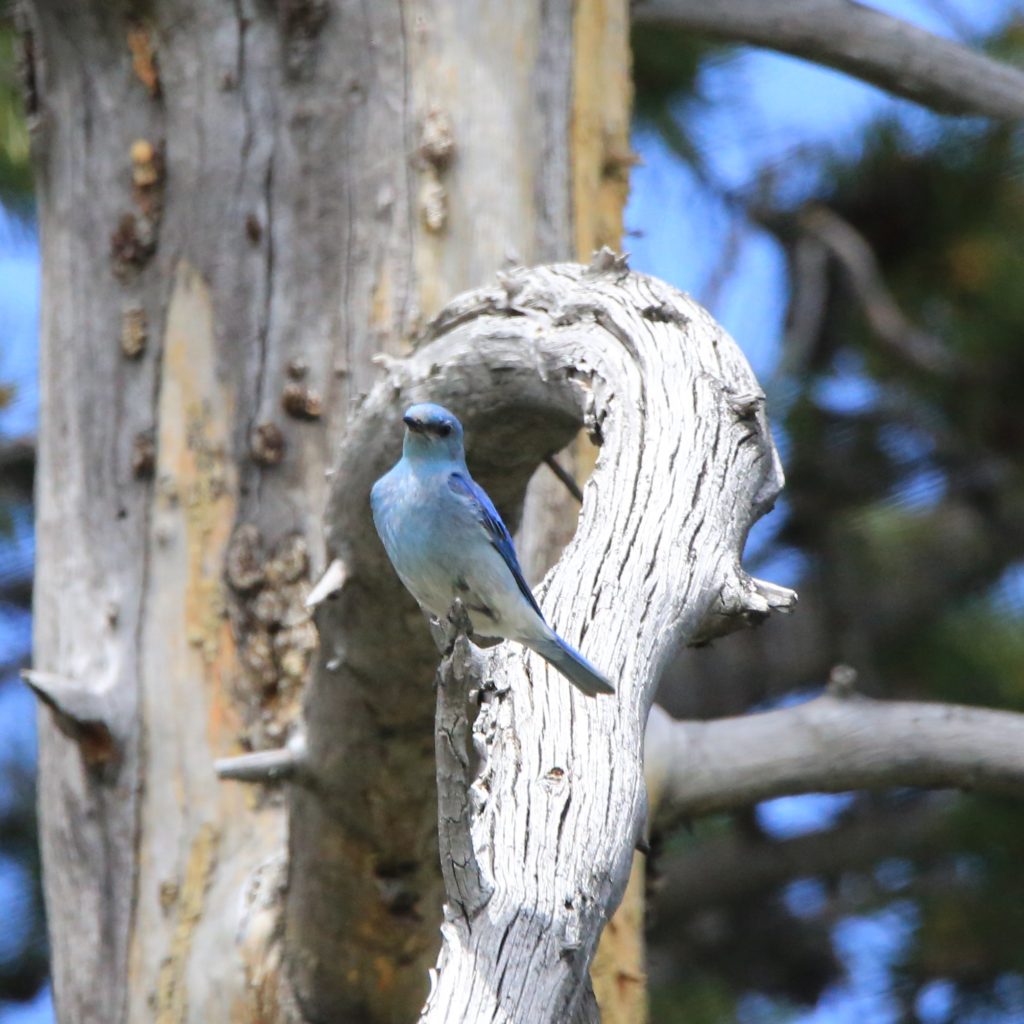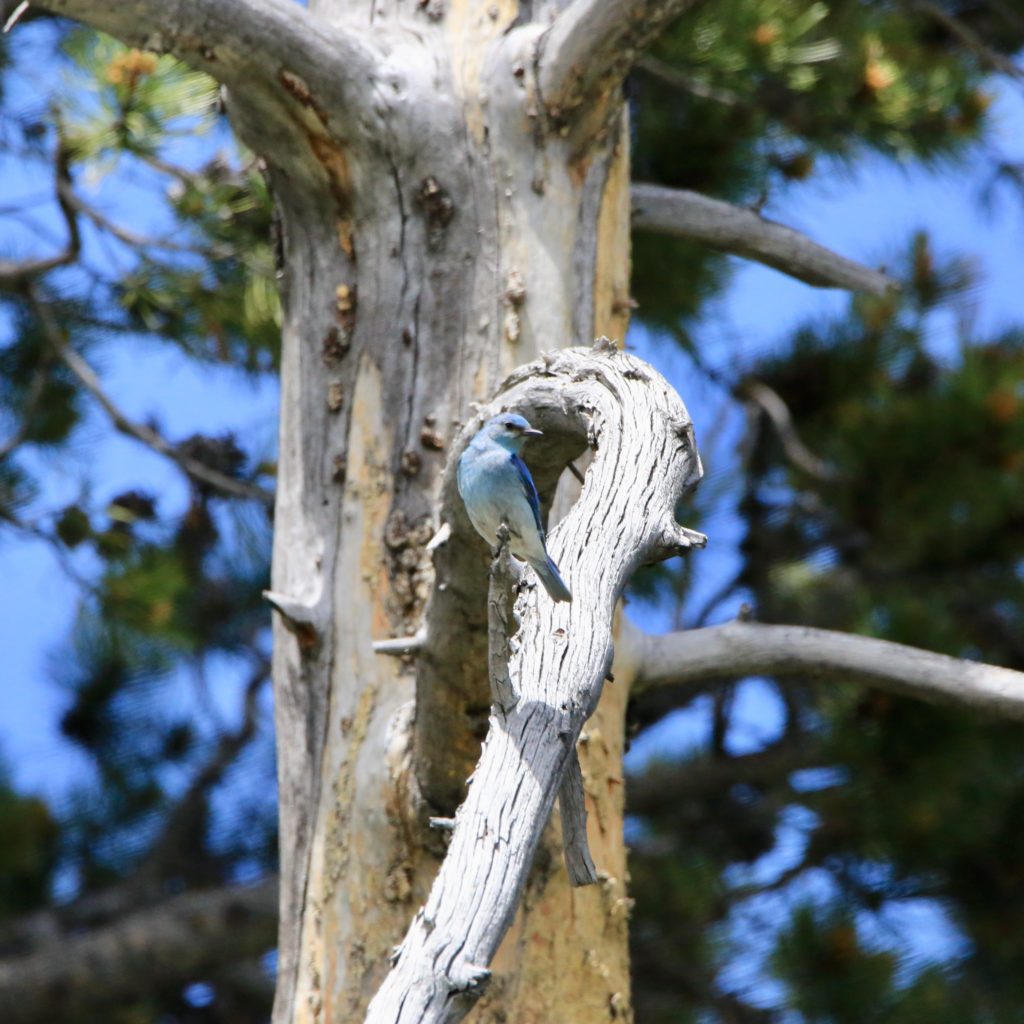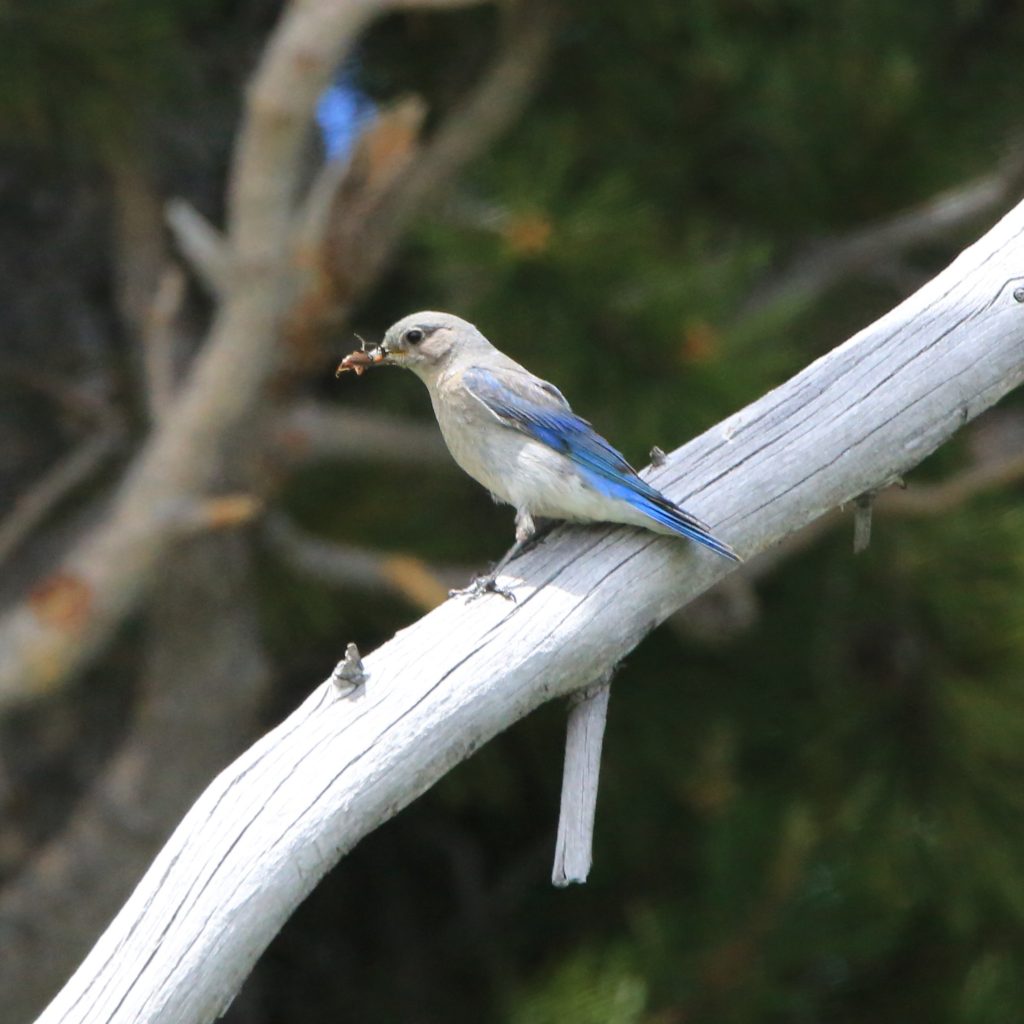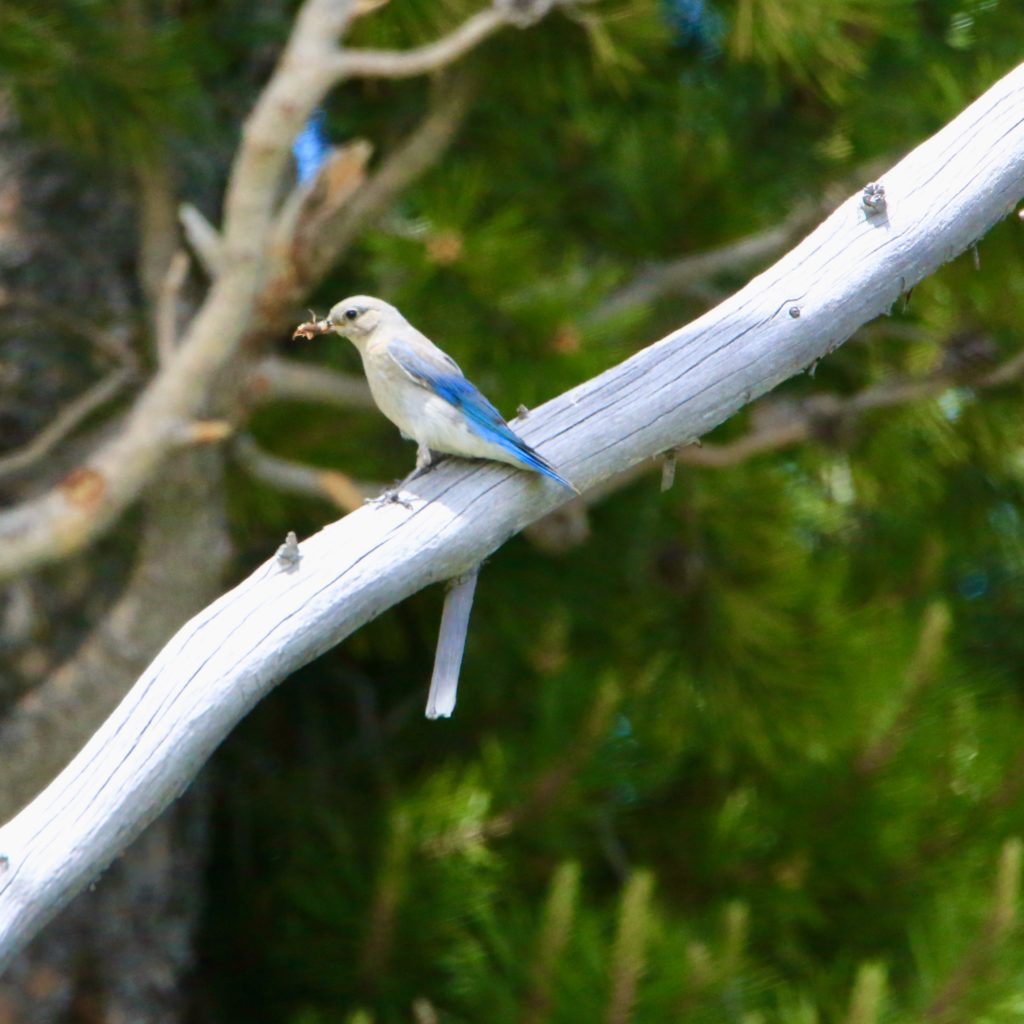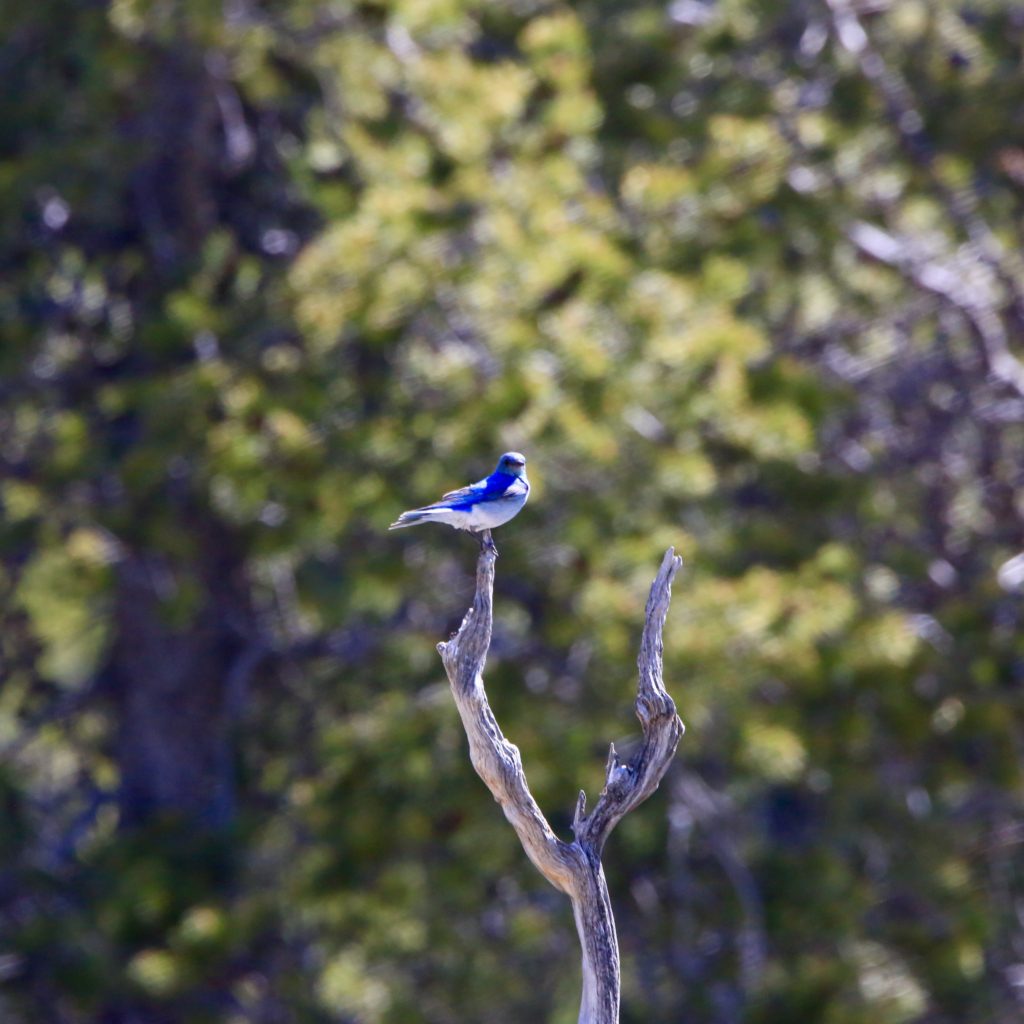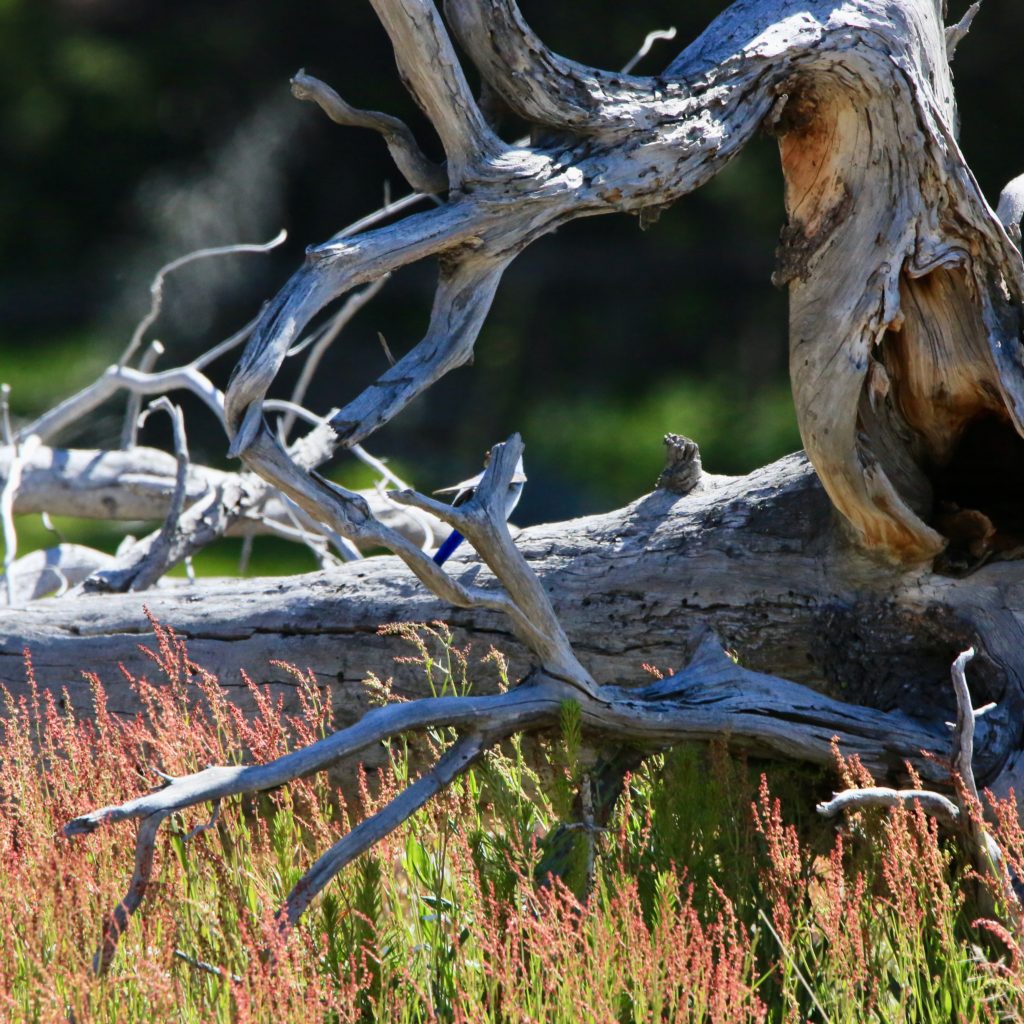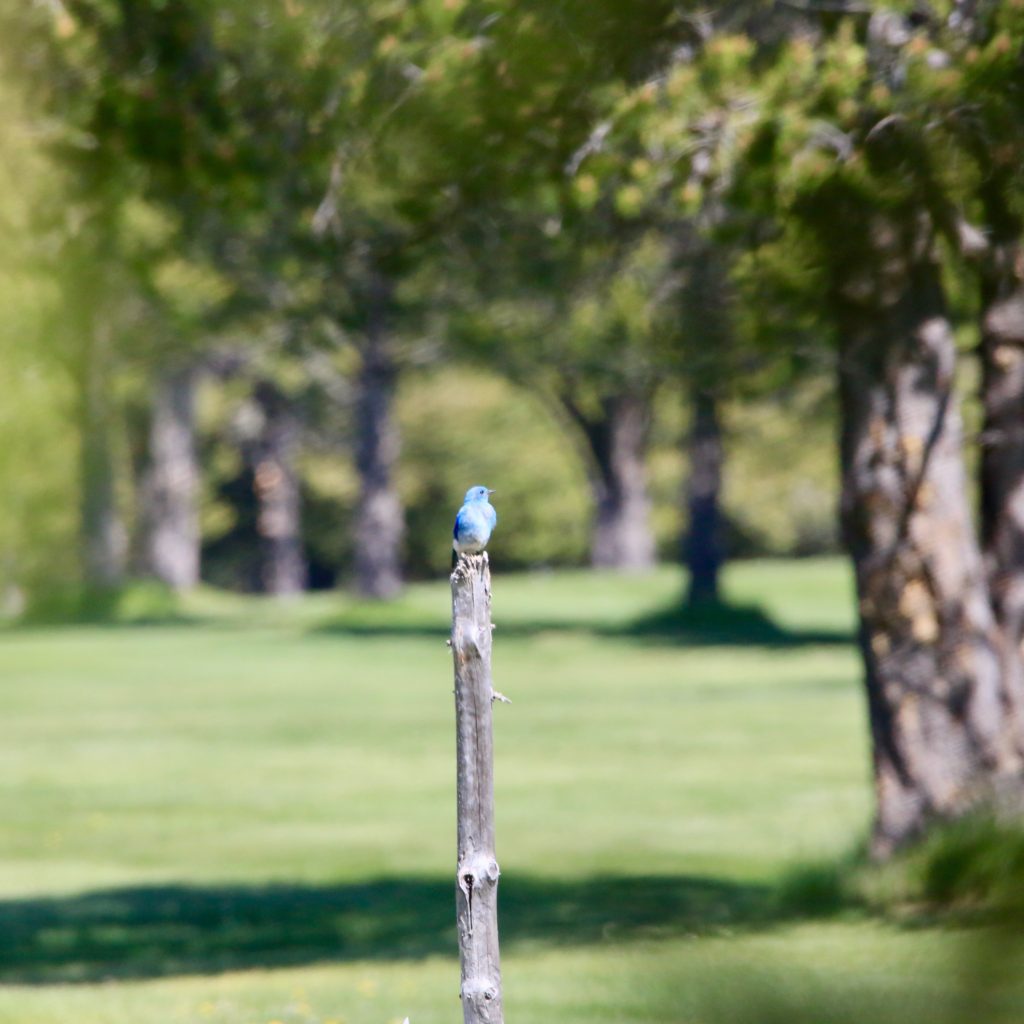
Mountain Bluebird
A Mountain Bluebird is a fun bird to see while bird watching. Below are some tips to help you identify Mountain Bluebirds. We have also put together a list of fun Mountain Bluebird t-shirts, Mountain Bluebird bird patches, bird houses, bird feeders, binoculars, stickers and other fun bird watching items.
About the Mountain Bluebird
The powder-blue males are one of the most beautiful birds in the west. They don’t shy away from human beings and you can find them flitting between perches in mountain meadows. They usually perch in open fields, tall trees, power lines, and fence posts. They frequent prairies where there is the presence of nest boxes. Some of their distinctive features include:
Description and Identification
Mountain Bluebirds are small thrushes that are between 6 – 7 inches long with a wingspan
of 11 – 14 inches. They have round heads and straight, thin bills. They are also longer tailed
and winged compared to the other bluebirds. Both sexes are approximate of the same size
but display sexual dimorphism in the color of their plumages. Male Mountain Bluebirds are
cerulean blue with darker hues of blue on their wings and tail. Their chests are light blue and
pale, with the region under their tails being white. The females are grayish brown with tinges
of blue on their wings and tail. The breast, crown, throat, and back of the females are all
gray, with occasional suffusions of orange and brown on the chest. The juveniles are pale
and have fewer spottings when compared to the young ones of other bluebirds.
Mountain Bluebird Color Pattern
These small birds are primarily blue with a whitish belly and pale blue breast and blue upperparts. Their eyes can be dark brown, black or hazel. The upper tail is blue while the undertail is white. However, the female is primarily gray with blue wings.
Mountain Bluebird Size
These small thrushes have straight, thin bills and rounded heads. In comparison to other bluebirds, they have a long tail and long-winged. They are larger than a Cassin’s finch but dwarfed by an American robin.
The relative size of both sexes
- Length range: 6.3-7.9 in (16-20 cm)
- Weight: 1.1 oz (30 g)
- Wingspan range: 11.0-14.2 in (28-36 cm)
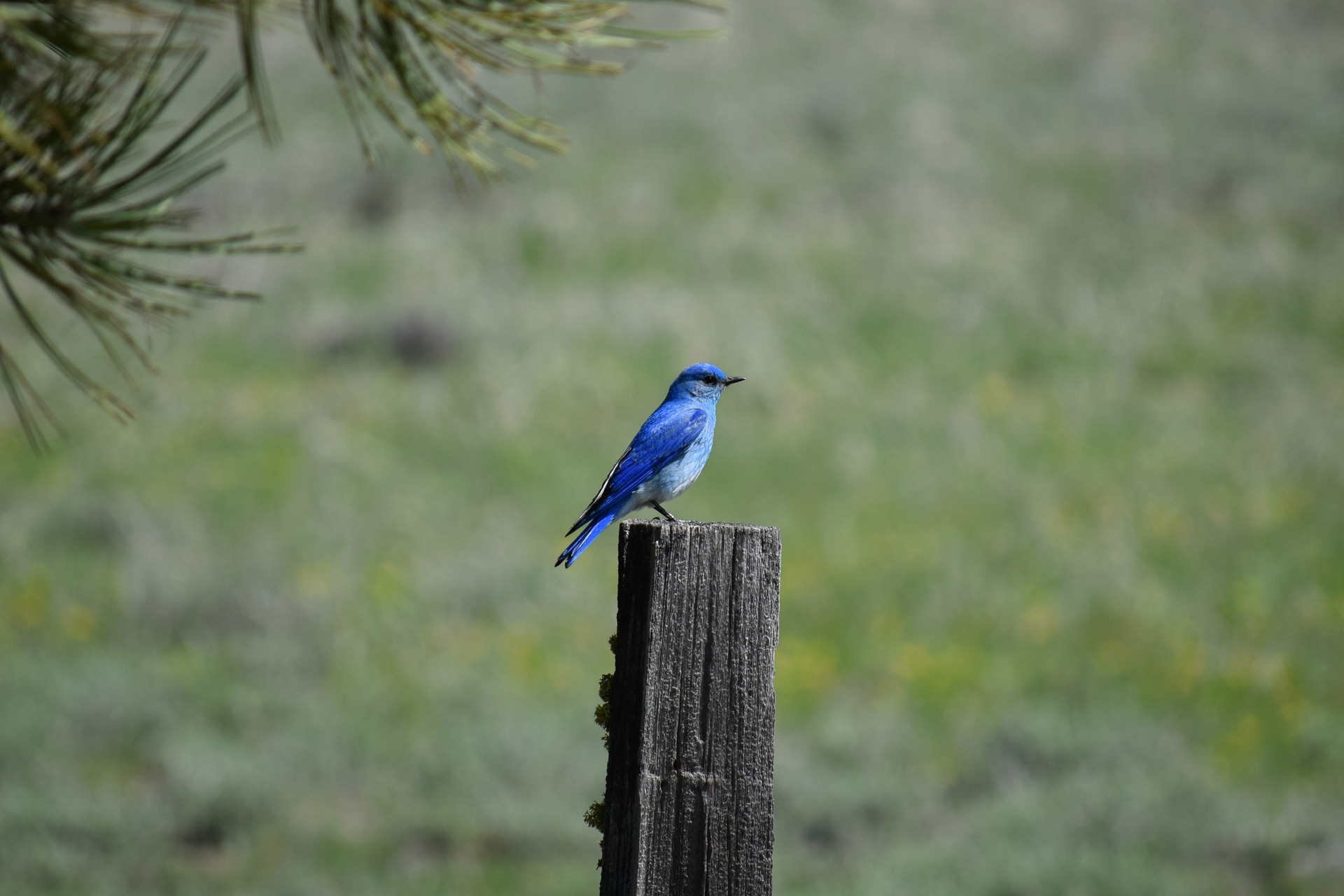
Mountain Bluebird Behavior
They forage by hovering around and also pounce on prey from an elevated site. In winter, they forage in large flocks devouring berries especially those of junipers. They also hunch on low branches and catch flying insects in midair. Sometimes, mountain bluebirds interbreed with eastern bluebirds.
What Mountain Bluebird Eat
Mountain Bluebirds mainly feed on insects, fruits and berries, and plant seeds. Their diet
predominantly consists of insects during the summer and breeding seasons, which include
caterpillars, beetles, grasshoppers, spiders, and earthworms. The winters have them shift
towards more plant-based items, such as elderberries, juniper berries, Russian olive berries,
grapes, currants, and the seeds of sumac, mistletoe, and hackberries. The young nestlings
are mainly fed insects like grasshoppers and beetles.
They mostly feed on berries and insects. They are heavy feeders of insects such as grasshoppers, caterpillars, beetles, ants, and bees. In the summer, they eat numerous berries particularly those of hackberry, juniper, and mistletoe.
Where Mountain Bluebirds Live
These birds are common in the wide-open spaces around the mountainous region in the
west of North America. They reside in middle and high elevations around 12,500 feet above
sea level in their native habitats; these regions can include prairie, sagebrush steppe, and
the alpine tundra. Long stretches of open spaces are essential for these bluebirds where
they seek out short grasses, shrubs, and trees. They go towards higher altitudes during the
breeding season and gravitate towards prairie and tundra edges, meadows, alpine hills,
pastures, or recently cleared areas. During winters, they go move to lower elevations and
seek out meadows, hedgerows, flat grasslands with a few scattered trees, and prairies. They
have been observed to avoid the nearby semi-arid regions and tend to prefer relatively
cooler temperatures.
In winter, they thrive in open fields coupled with short grass, scattered trees, and shrubs. Even though they are known to breed in montane areas, they also breed in lowland areas such as lowland prairies. They also frequent deserts, farmlands, and grasslands.
Range and Migration
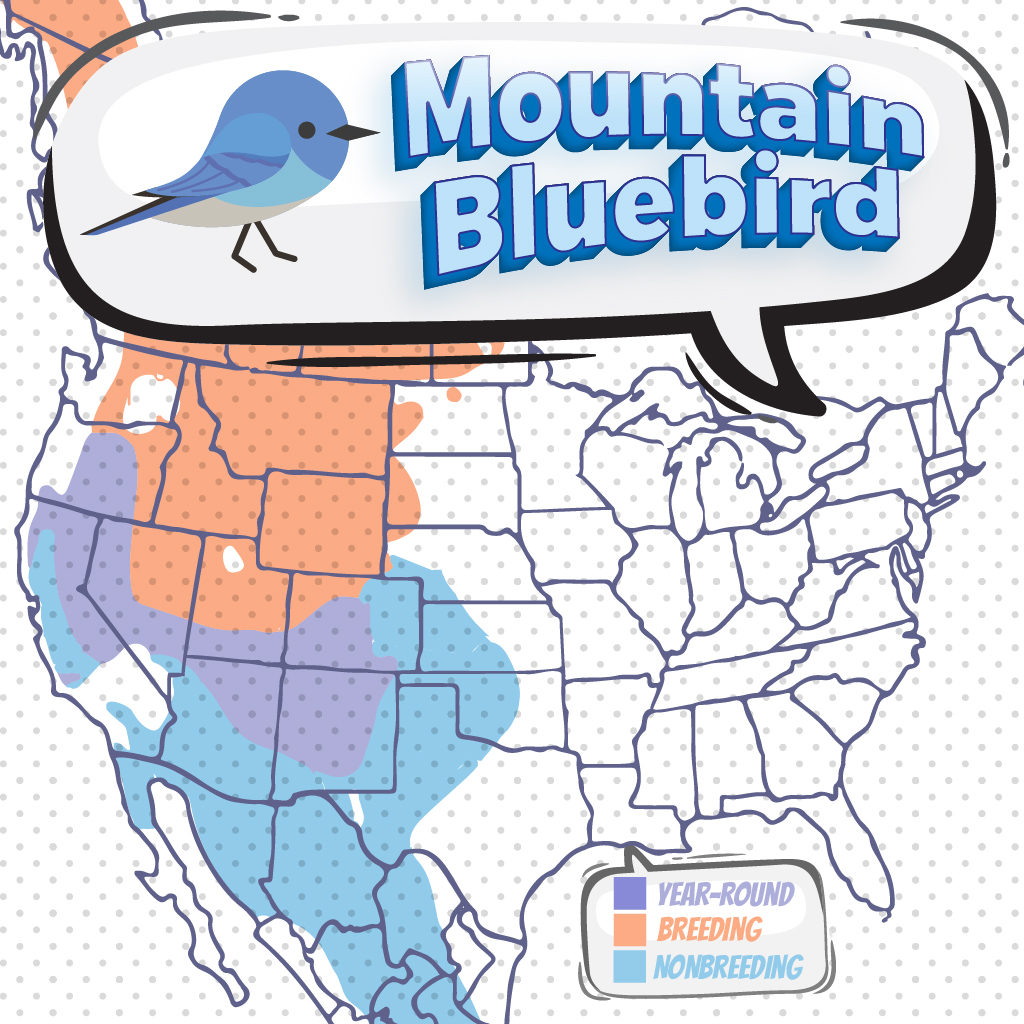
Mountain Bluebirds are small migratory thrushes that are found along the mountainous
regions along the Rocky Mountains in North America. Some birds are endemic to regions in
the United States, but most breed in the northern Rockies in Canada and Alaska while
wintering in regions of western Mexico.
Mountain Bluebird Lifecycle
The females lay 5-6 eggs and incubate them for about 13-17 days. The nestlings are fed by both parents and leave the nest 17-23 days after hatching. The parents tend to them for the next 3-4 weeks. They produce two broods per year. Mountain bluebird’s lifespan is 1-2 years in the wild.
Mountain Bluebird Nesting
Mountain Bluebirds nest within cavities found in trees, cliffs, or buildings. There is not much
data on the specific preferences of these cavities, but it has been observed that males scout
for all vacancies within their territories while the females select the final site. The general
trend is finding a dry cavity about 3 feet above the ground. The nest is then primarily built by
the females, although the males frequently engage in symbolic acts of nest building – such
as picking up items and dropping them along the way before reaching the nest. Floors are
typically made up of coarse leaves and dry vegetation. After the floors are made, the
females hollow out a cup greater than 2 inches deep and line it with fine grass, strips of soft
bark, and in some cases, wool. These nests allow for a clutch size of 4 – 8 eggs following incubation of 2 – 3 weeks. The birds have also frequently been observed to reuse old nest
sites during breeding.
Ornithology
Bird Watching Academy & Camp Subscription Boxes
At Bird Watching Academy & Camp we help kids, youth, and adults get excited and involved in bird watching. We have several monthly subscription boxes that you can subscribe to. Our monthly subscription boxes help kids, youth, and adults learn about birds, bird watching, and bird conservation.
Bird Watching Binoculars for Identifying Mountain Bluebirds
The most common types of bird watching binoculars for viewing Mountain Bluebirds are 8×21 binoculars and 10×42 binoculars. Bird Watching Academy & Camp sells really nice 8×21 binoculars and 10×42 binoculars. You can view and purchase them here.
Mountain Bluebird T-shirts
If you love the Mountain Bluebird you should purchase a Bird Watching Academy & Camp T-shirt. To help support bird conservation we donate 10 percent to bird conservation activities.
Mountain Bluebird Iron On Patches
Kids, Youth, and Adults love to collect our Bird Watching Academy & Camp iron on patches. Our bird watching patches help you keep track of the birds you have seen an identified. You can also display the patches on our Bird Watching Academy & Camp banners.
The Mountain Bluebird is a great iron on patch to start your collection with. The patches are durable and can be sewn on or ironed on to just about anything.
Mountain Bluebird Stickers
Stickers are a great way for you to display your love for bird watching and the Mountain Bluebird. We sell a monthly subscription sticker pack. The sticker packs have 12 bird stickers. These sticker packs will help your kids learn new birds every month.
Bird Feeders For Mountain Bluebird
There are many types of bird feeders. Here are our favorite bird feeders for your backyard. We use all of these bird feeders currently. Kids will have a great time watching birds eat at these bird feeders. Using this collection of bird feeders will provide a wide variety and many types of birds.
Best Bird Houses for Mountain Bluebird
There are many types of bird houses. Building a bird house is always fun but can be frustrating. These 4 bird houses have become our favorites. Getting a bird house for kids to watch birds grow is always fun. We spent a little extra money on these bird houses but they have been worth the higher price and look great.


